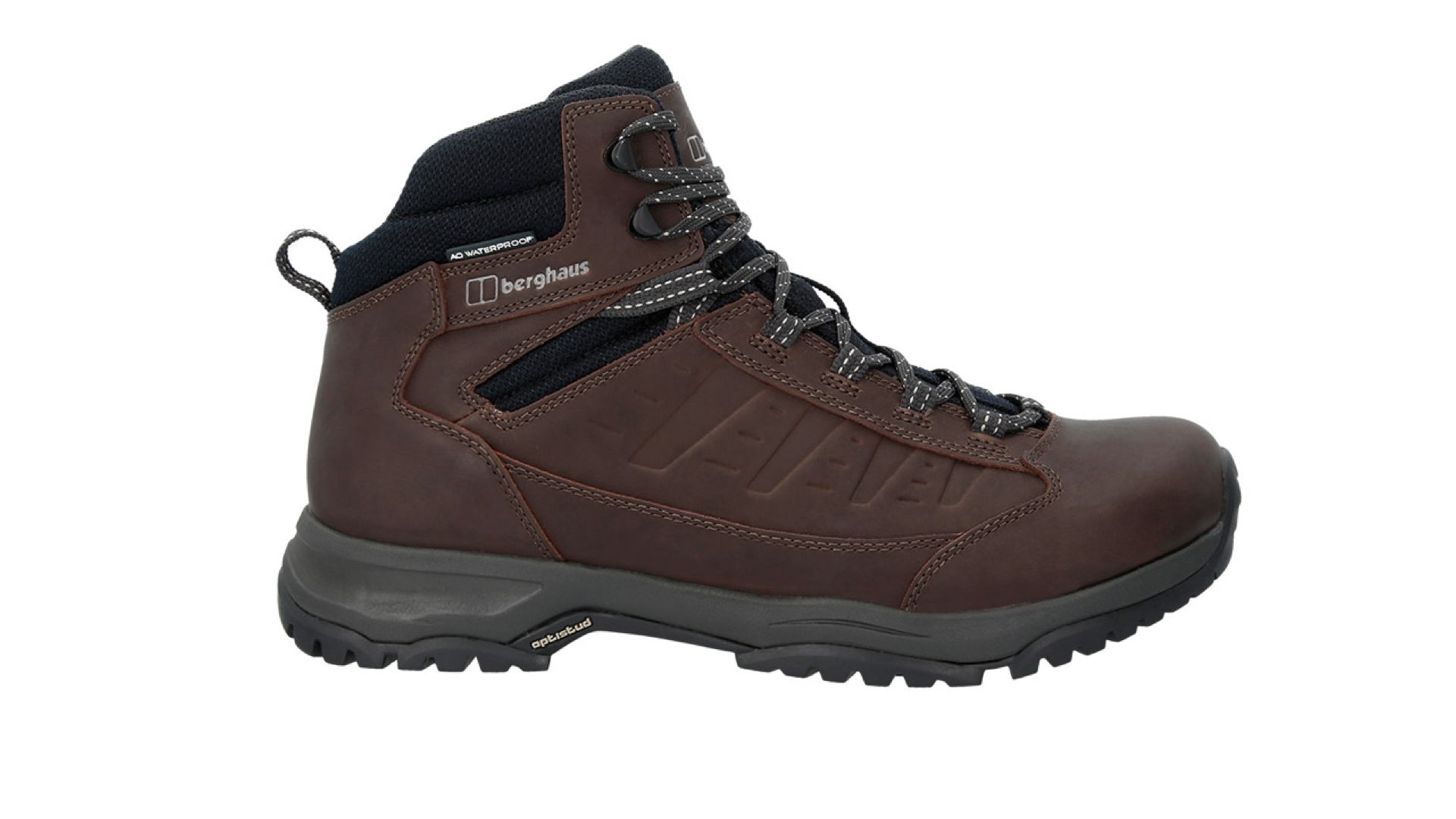Advnture Verdict
Well-cushioned and protective, these waterproof leather hiking boots are well-suited for lower-level day hikes.
Pros
- +
Great everyday walking boot
- +
Waterproof
Cons
- -
Not the stiffest or most protective underfoot, especially for big days or extended trips
You can trust Advnture
Berghaus Expeditor Ridge 2.0: first impressions
The Berghaus Expeditor Ridge 2.0 is a mid-cut hiking boot that combines quality leather uppers with a waterproof liner, plus plenty of ankle padding and generous underfoot cushioning. They’re reasonably lightweight for leather boots. They’re generally well-built too, with solid stitching, though the finish perhaps isn’t the neatest we’ve seen, with traces of adhesive around the soles and uppers.
Despite that, they feel like good quality boots. In terms of fit, we’d describe them as medium volume, with a roomy toe box, a narrower midfoot and a close-fitting heel cup. They ought to fit a wide range of foot shapes, although they may not suit you if your feet are unusually broad. For us, they delivered decent out of the box comfort.
• RRP: $150 (US) / £110 (UK)
• Weight (per boot): 510g / 18oz
• Materials: Leather upper with AQ waterproof breathable mesh lining, EVA midsole, OrthoLite footbed, super grip OPTI-STUD outsole
• Colors: Black & Red / Black & Brown
• Compatibility: Three-season walking on most non-technical trails
Berghaus Expeditor Ridge 2.0: on the trails
Unsurprisingly – given their affordable price tag – most of the technology here has been developed in-house by Berghaus, rather than making use of third-party branded components like Gore-Tex or Vibram. But on test the AQ membrane proved reliably waterproof, while the Opti-Stud lug pattern underfoot gave reasonable traction on all but the most treacherous surfaces.
The EVA midsole prioritizes cushioning over stiffness, which means these boots are more at home on well-trodden paths than technical terrain. Similarly, the emphasis is on day hiking rather than sustained backpacking missions with a heavy pack. As with many boots, the insoles are a bit of a let-down, lacking both structure and padding. Of course, this would be easily remedied with the addition of aftermarket insoles. We did like the ample padding around the ankle cuff and tongue though, which is soft and comfortable – again, ideal for day hikes.
All in all, it’s tough to criticize these boots given their low price point. They outperform most other options at the entry-level end of the market and are likely to last far longer than rival fabric boots, scoring well for durability.
All the latest inspiration, tips and guides to help you plan your next Advnture!
An outdoors writer and editor, Matt Jones has been testing kit in the field for nearly a decade. Having worked for both the Ramblers and the Scouts, he knows one or two things about walking and camping, and loves all things adventure, particularly long-distance backpacking, wild camping and climbing mountains – especially in Wales. He’s based in Snowdonia and last year thru-hiked the Cambrian Way, which runs for 298 miles from Cardiff to Conwy, with a total ascent of 73,700 feet – that’s nearly 2½ times the height of Everest. Follow Matt on Instagram and Twitter.


